|
Bonnie Chow
2 Hours on Takayama's Higashiyama Walking Course

Takayama is a world-famous travel destination with a well-preserved historic old town and the mouthwatering Wagyu - Hida beef. But you might have missed Takayama’s historic Higashiyama Walking Course, with ten temples you can visit in one day, free of charge. In Japan, temples (Tera) are for the Buddhist faith, whereas shrines (Jinja) are for the Shinto faith. Today visiting temples for prayer, appreciating their beauty, especially those with Zen gardens, and admiring traditional Japanese architecture in natural surroundings are the most common reasons.
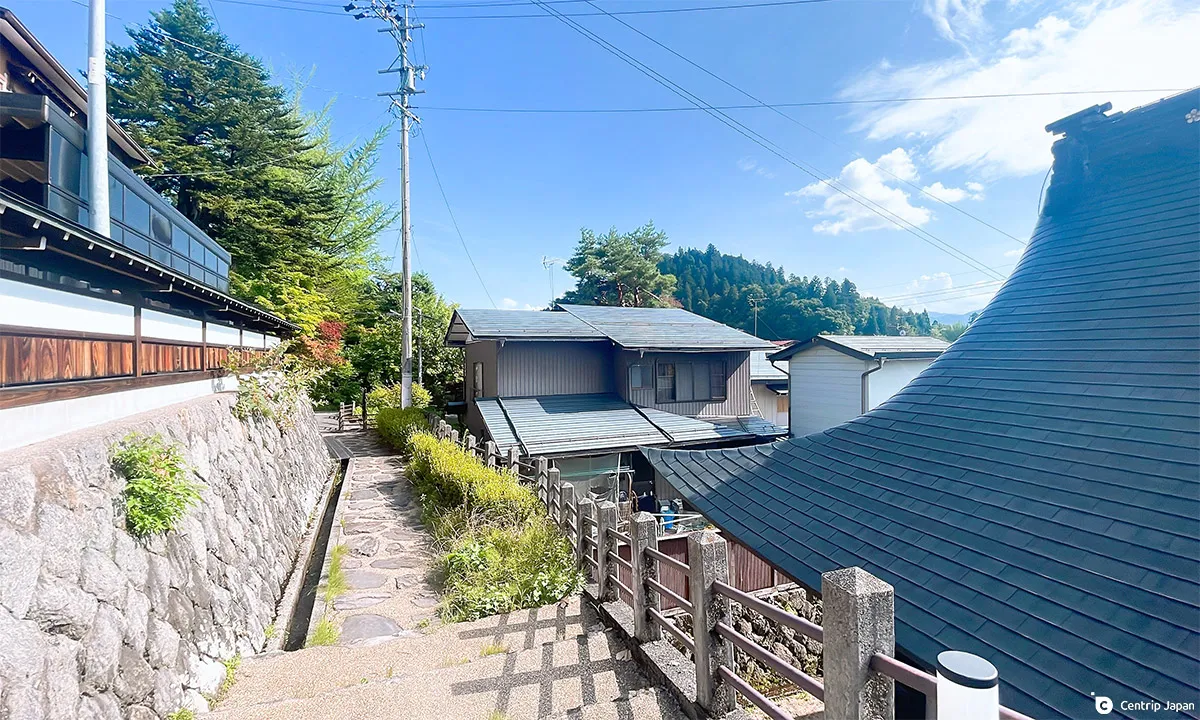 Enjoy walking the cobblestone paths between temples and shrines.
Enjoy walking the cobblestone paths between temples and shrines.
Table of Contents
10 Temples in the Higashiyama Temple Area
It takes about two hours to see all the temples on the Higashiyama Walking Course. The history of these temples originates in the 16th century when Nagachika Kanamori, a feudal Lord, established the castle town by relocating some temples to the east side of Takayama castle.
The exceptional skills of Hida’s carpenters are evident in the marvelous work they accomplished building the temples, which you can enjoy, along with the surrounding environment. Unlike in many other areas in Japan, Takayama city provides multi-lingual information explaining the history and characteristics of each temple displayed on boards at each location. One interesting fact you will discover is the timber chosen by the carpenters to build the temples has been in use for over one thousand years, withstanding the heavy snows and the strong winds over the centuries.
If you would like to take a coffee break, please feel free to drop by a cozy café on the trail. As a local, I also appreciate strolling along the promenade to take instagrammable photos of the seasonal changes, especially seeing the cherry blossoms in spring and foliage in fall.
 The trees on the narrow path to Tenshoji temple become a canopy of fall leaves around early November.
The trees on the narrow path to Tenshoji temple become a canopy of fall leaves around early November.
Unryuji Temple
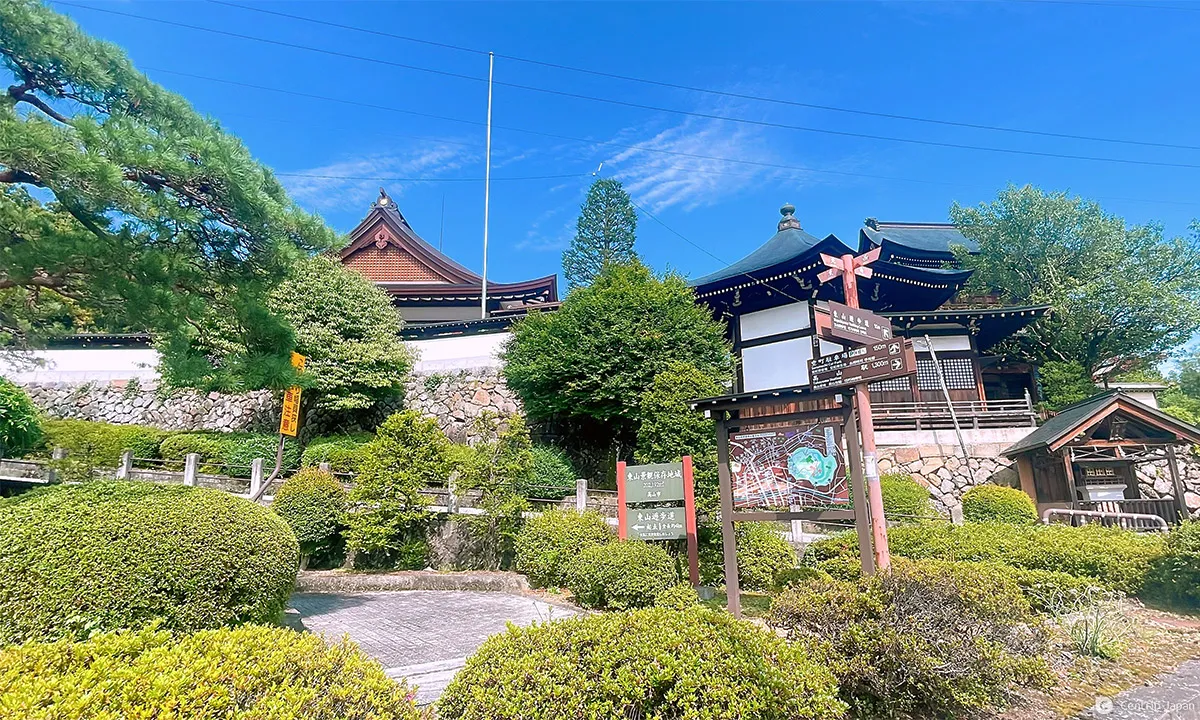 Unryuji Temple is the starting point of the Higashiyama walking course.
Unryuji Temple is the starting point of the Higashiyama walking course.
Unryurji Temple is the first temple on the path and is about a 5-minute walk from Yasugawa shopping street in Takayama’s city center. It was built in 720 but destroyed twice in a fire and finally rebuilt in 1732. It served as a family temple for the Kanamori family and is easily spotted from the street by its size and the large belfry gate, relocated here from Takayama Castle in 1590.
Higashiyama Hakusan Shrine
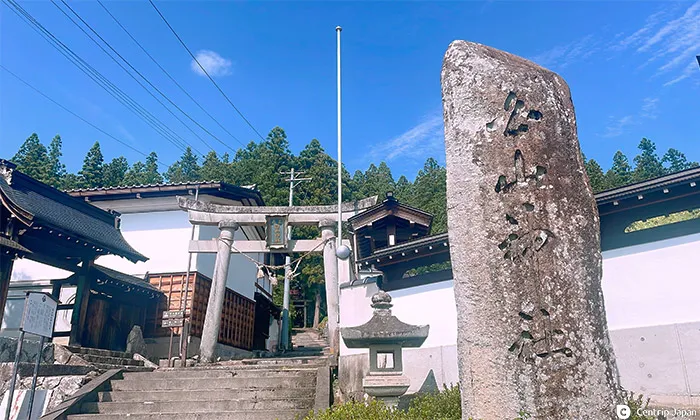 The torii gate entrance of Hakusan Shrine
The torii gate entrance of Hakusan Shrine
 The guardian dogs were donated by Hida carpenters.
The guardian dogs were donated by Hida carpenters.
Walk up some stairs and pass through numerous giant cedar trees to arrive at Higashiyama Hakusanjinja Shrine, the oldest shrine on the walking course. The shrine, built in 719, stores a portable Kaguratai shrine for a festival held on 5 May yearly. It is a Municipal Folk Cultural Property in Japan. The guardian dogs and the main hall horse statues, donated by Hida carpenters, are worth checking out too.
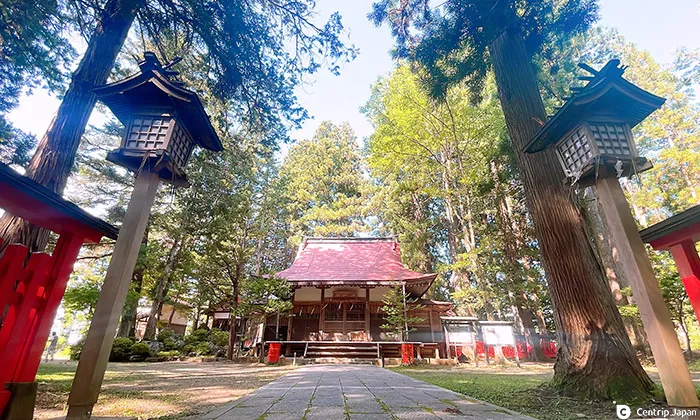 The shrine is surrounded by trees.
The shrine is surrounded by trees.
 The path to the shrine has massive cedar trees you can touch to feel the power of nature.
The path to the shrine has massive cedar trees you can touch to feel the power of nature.
Daioji Temple
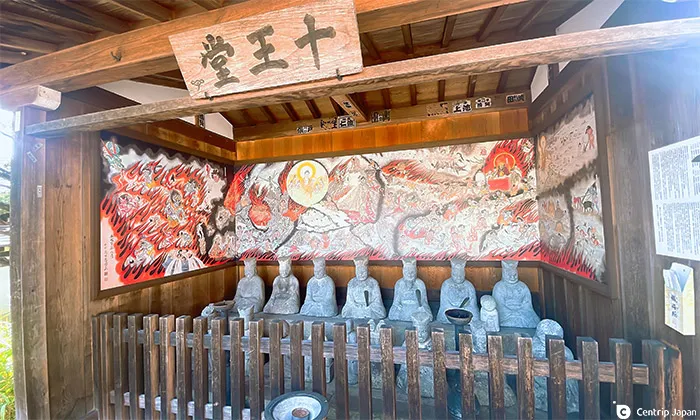 The painting of Buddhist hell at Daioji Temple.
The painting of Buddhist hell at Daioji Temple.
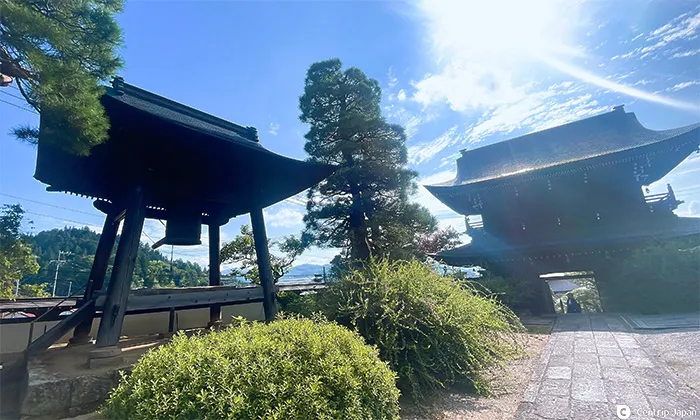 The oldest belfry and the only two-storied gate with gable roofs in the Hida region are must-see spots.
The oldest belfry and the only two-storied gate with gable roofs in the Hida region are must-see spots.
In 1586 Lord Kanamori relocated Daioji Temple to its current location. It has a painting of hell (from the Buddhist tradition), the oldest belfry, and the only two-storied gate with gable roofs in the Hida region. The gate was destroyed by a typhoon in 1791 and rebuilt by Hida carpenters in 1807.
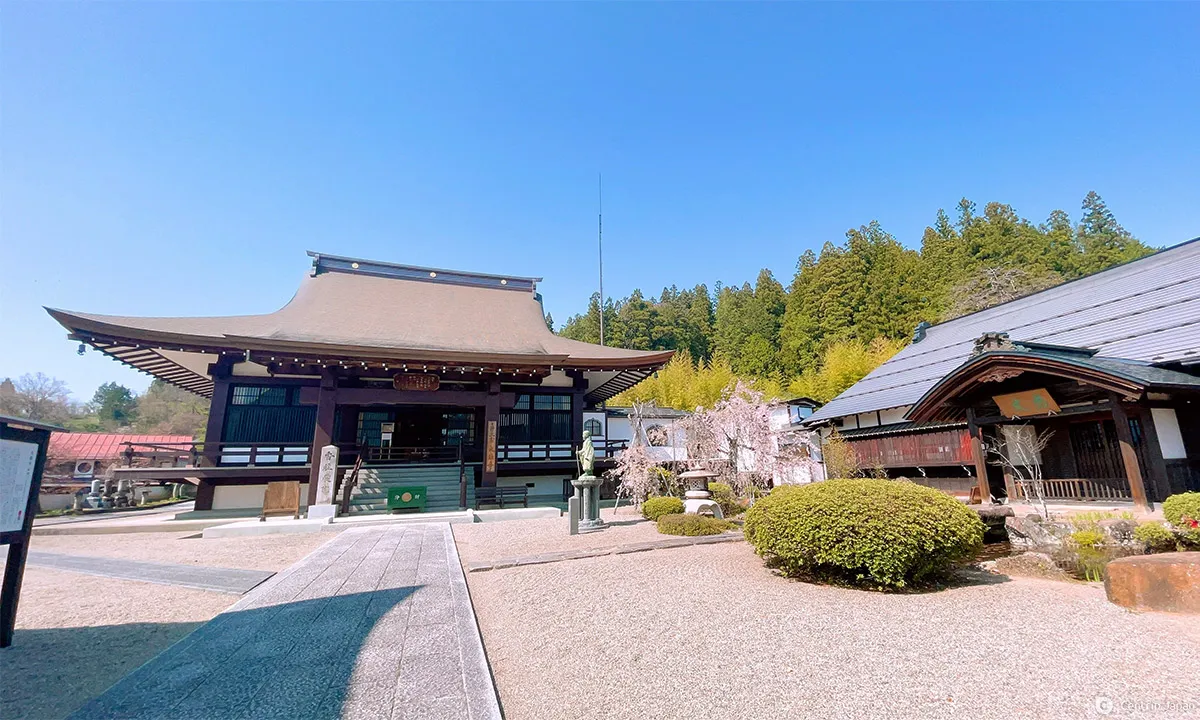 Daiojin Temple during spring with cherry blossoms
Daiojin Temple during spring with cherry blossoms
Dou-un-in Temple
In this temple, built in 1614, a guardian deity, Koyasu Jizo, the god of praying for safe childbirth in Japan, was enshrined here after many children lost their lives in a famine caused by the eruption of Mt. Asama in 1783.
Sogenji Temple
To mourn the first feudal lord Nagachika Kanamori, his son Arishige Kanamori built this temple in 1609. Afterward, it became the Kanamori family’s cemetery. The copper roof of the main building is the highlight here.
 Kumo (cloud) is often sculpted on the pillars in the Hida region by the local carpenters.
Kumo (cloud) is often sculpted on the pillars in the Hida region by the local carpenters.
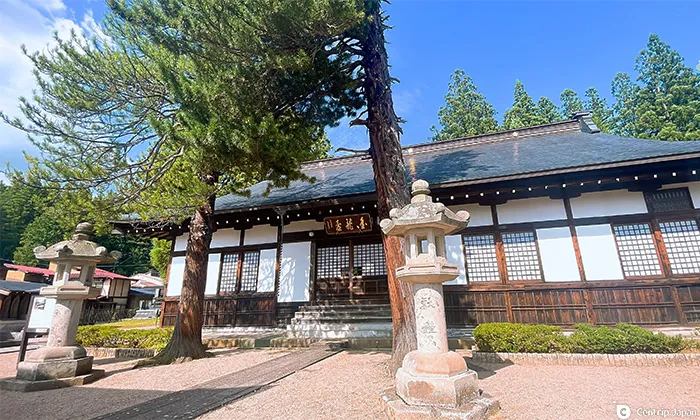 The main hall of Sogenji Temple
The main hall of Sogenji Temple
Higashiyama Shinmei Shrine
The year the shrine was built is unknown, and the shrine is a bit different from other temples as you will see an Ema-den (wooden placard) hall on your right upon arrival. The Ema-den was relocated from Takayama castle when the castle was demolished in 1695. The Ema-den hall was used for moon-viewing because of the many square pillars without walls in between.
 The Ema-den hall was used as a moon-viewing building before
The Ema-den hall was used as a moon-viewing building before
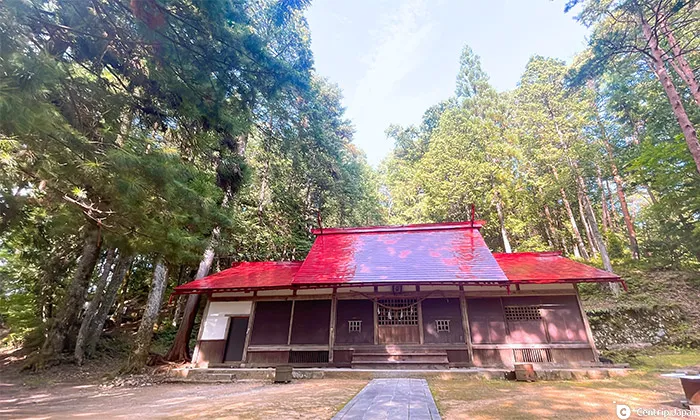 The roof of Shinmei Shrine was recently repainted
The roof of Shinmei Shrine was recently repainted
Tenshoji Temple
The fabulous colors of the Japanese maples make this a local favorite among locals during the fall. It was built around 1182 and rebuilt in 1615 as it went unused for a long time. Hida carpenters sculpted two wooden elephants on the top of the pillar to replace the usual cloud shape. If you visit Takayama in autumn, this temple is a must-visit spot for beautiful fall foliage.
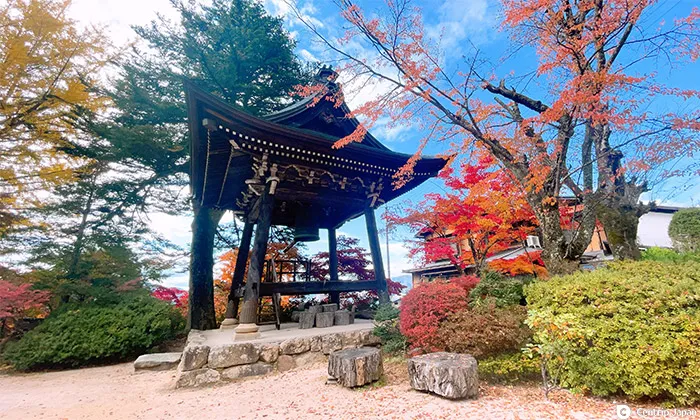 Beautiful fall foliage at Tenshoji temple
Beautiful fall foliage at Tenshoji temple
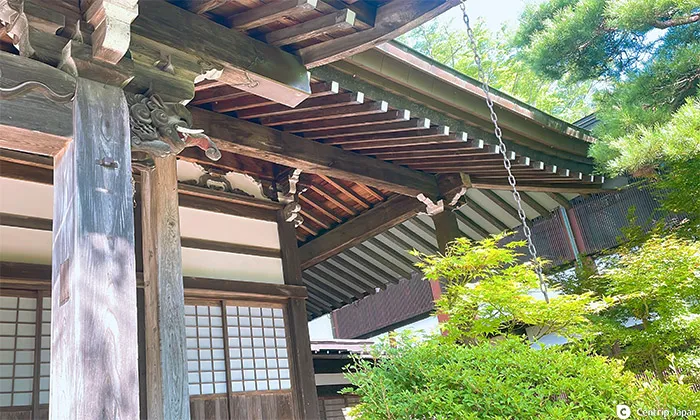 Can you spot the elephant on the pillar?
Can you spot the elephant on the pillar?
Hokkeji Temple
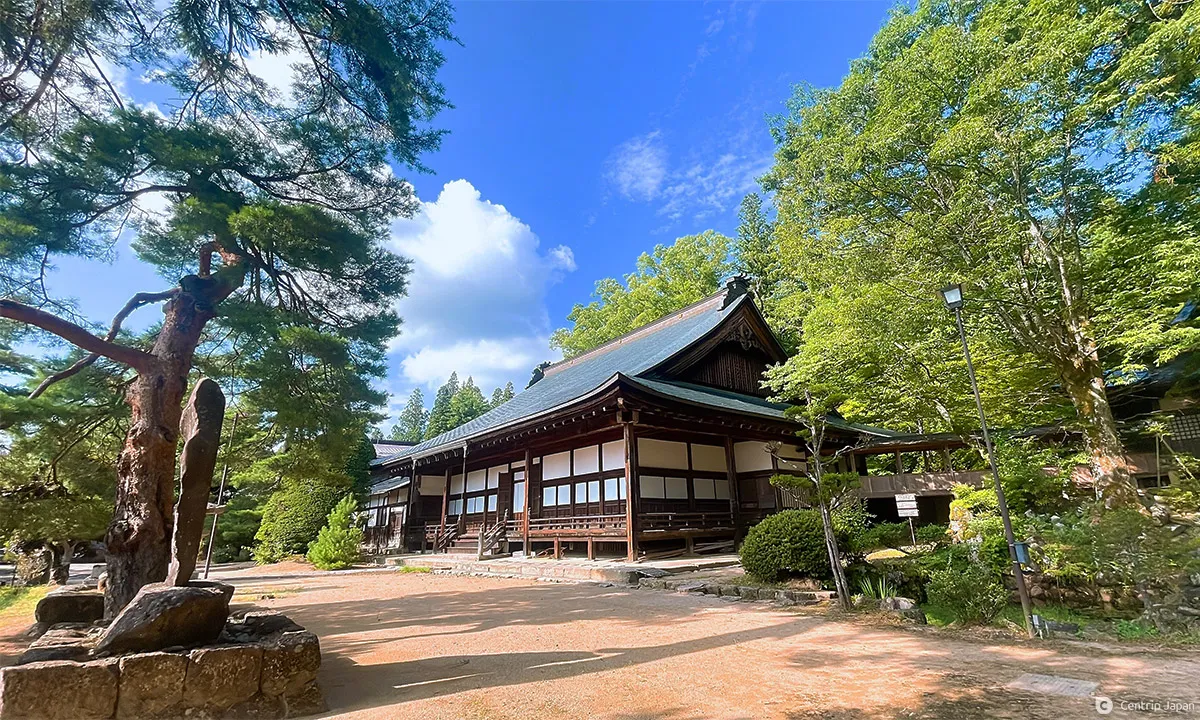 Hokkeji Temple has a beautiful garden next to the main hall.
Hokkeji Temple has a beautiful garden next to the main hall.
The main temple was relocated from Takayama castle by the third lord of the castle Shigeyori Kanamori in 1632 to pray for the spirits of his grandson, exiled to Takayama. The highlight of the main temple is the Nuki joinery, similar to mortise and tenon joints, but one beam fully passes through another beam.
Zennoji Temple
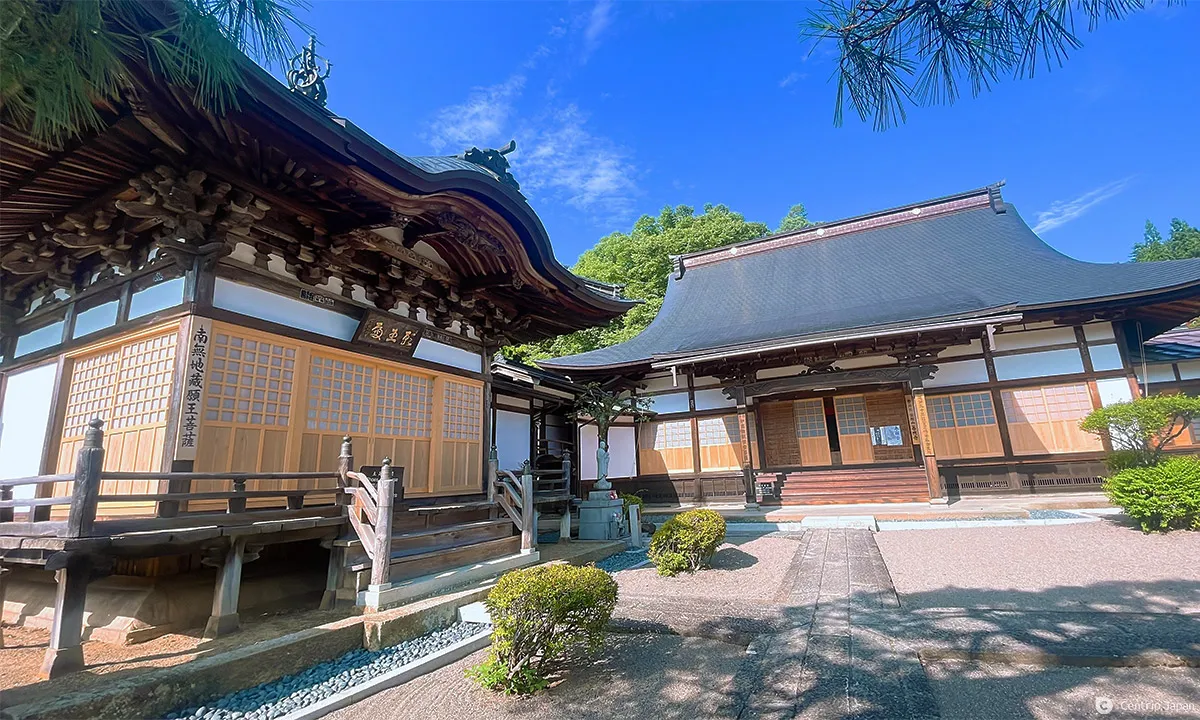 Zen Meditation experience is available in Zennoji Temple.
Zen Meditation experience is available in Zennoji Temple.
This temple was founded in 1558 and burnt down in 1585 with Matsukura castle. The temple was relocated from Matsukura to Higashiyama in 1835 by Lord Kanamori. If you are interested in Zen meditation, this is the place for you. If you want a Zen experience, please make a reservations
Soyuji Temple
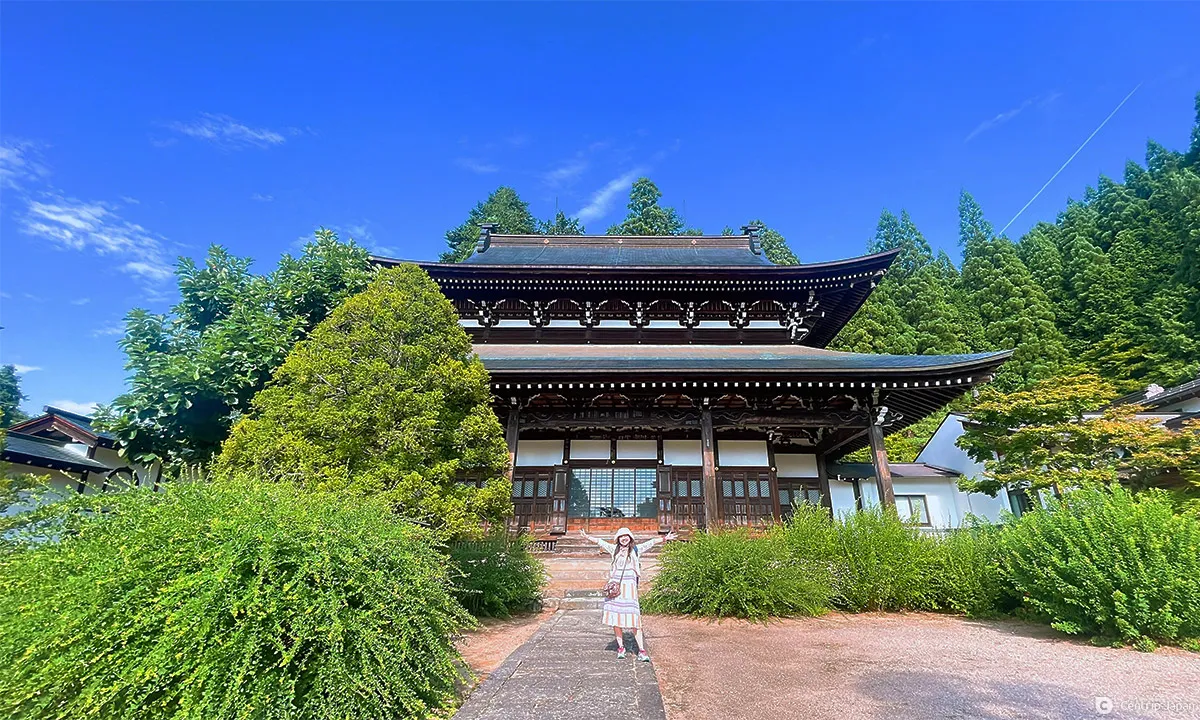 I look so tiny in front of the Soyuji Temple.
I look so tiny in front of the Soyuji Temple.
Soyuji is the last temple to visit on the Higashiyama Temple Walking course and is the biggest of all. Soyuji temple was built in 1632 to pray for Arishige Kanamori, the father of the third generation of the Kanamori family.
Lunch & Café-hopping
Let’s fill our stomachs and chill out in-between visits to the magnificent temples.
Daikokuya
 Wild vegetable soba provided by Daikokuya
Wild vegetable soba provided by Daikokuya
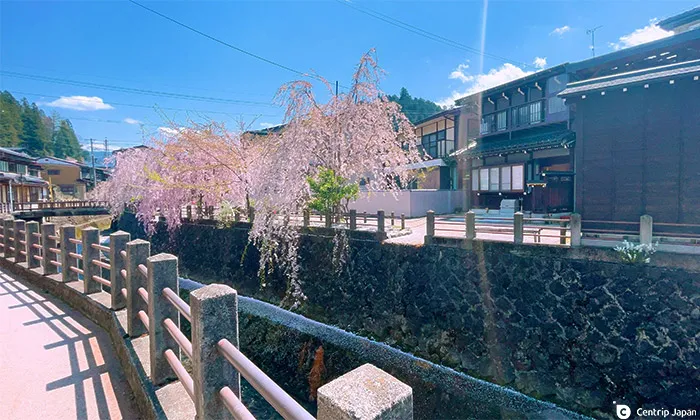 Daikokuya is next to Enako River, with cherry blossoms in the spring.
Daikokuya is next to Enako River, with cherry blossoms in the spring.
Are you feeling hungry while walking in the temple area? Stop by this lovely noodle restaurant operated daily by neighborhood grandmothers making delicious soba (buckwheat noodles) and udon noodles with toppings such as the mini-scallop tempura or curry with chicken soup.
Jiro Coffee
 The latte and handmade carrot cake in Jiro Coffee are delish.
The latte and handmade carrot cake in Jiro Coffee are delish.
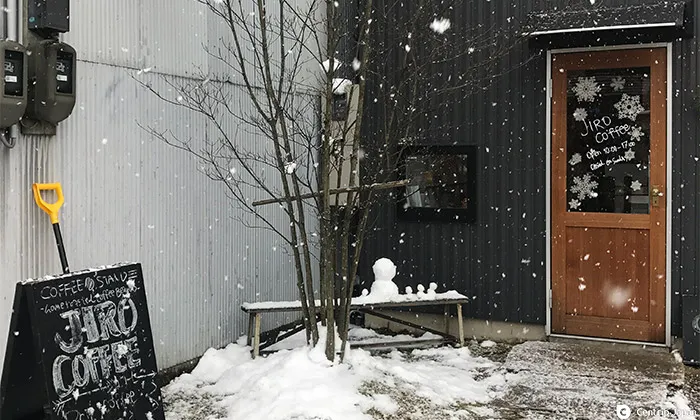 Jiro coffee looks even more lovely in the winter snows.
Jiro coffee looks even more lovely in the winter snows.
If you have a craving for an expresso or a latte then Jiro Coffee, a tiny café in this area, is a hidden gem and great for a snack and rest. The owner roasts their coffee beans and offers several kinds of handmade desserts too.
Casa Sola
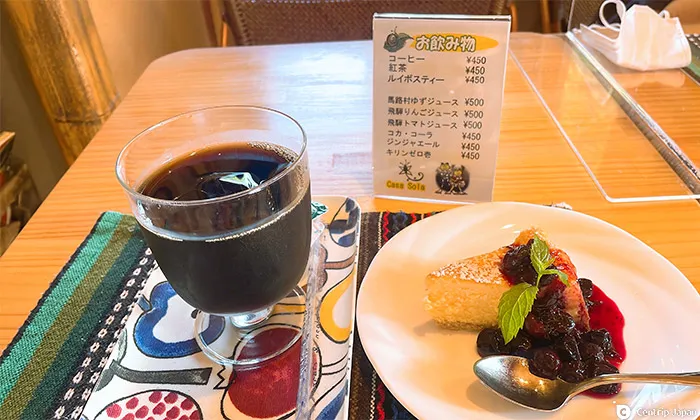 Homemade cheesecake and an iced coffee are a good treat to ourselves after two-hour walk in summer.
Homemade cheesecake and an iced coffee are a good treat to ourselves after two-hour walk in summer.
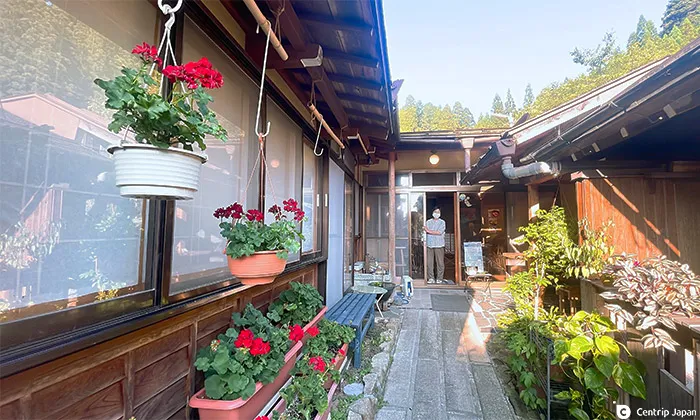 The owner of Casa Sola is a friendly lady who spent some time in Spain.
The owner of Casa Sola is a friendly lady who spent some time in Spain.
The owner of Casa Sola spent some time in Spain studying art and cuisine in her 20s. She is very hospitable and offers tasty cheesecake and coffee. Not only is she a Takayama local, but she is also willing to share her adventures in Spain. She can speak Spanish too, great for Spanish speakers. Feel free to chill out and have a chat with the owners in Casa Sola after your 2-hour walk.
How to get to Takayama?
From Nagoya, the fastest and most direct way to reach Takayama is by JR Wide View Hida train. It takes about 2 hours and 40 minutes. Alternatively, you can also take the public bus to Takayama. The one-way train price is ¥5,610 whereas the one-way bus fee to Takayama is relatively cheaper at ¥3,100.
Wrap Up
If you are interested in experiencing the historical culture of Takayama, it is great to take half a day to explore the Higashiyama temple area and chill out at one of the cafes on your next trip.
Click here to get the latest information on Central Japan.Centrip Japan - Nagoya and Chubu Information

